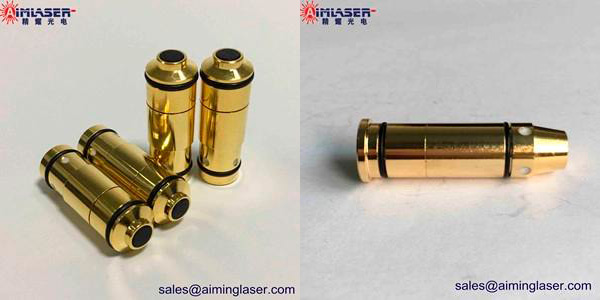Laser-guided bullets break through the inertial trajectory of bullets flying straight after being fired from a threaded barrel. The advent of a laser-guided bullet similar to a dart has set a precedent for unpowered curved flight and directly subverted the traditional shooting principle. This laser-guided bullet is 4 inches long and is suitable for 50 caliber gun family weapons. The laser-guided bullets can automatically adjust their direction during flight, hitting targets more than a mile away like tiny missiles, the researchers said. This kind of bullet can be widely equipped in the army, so as to improve the hit rate of shooting, so that ordinary soldiers also have the magical marksmanship of snipers.

Although guided bombs and guided missiles have long been unsurprising, it is difficult to develop bullets with guided functions. Because of the small caliber and volume of the bullet, it is quite difficult to install the guidance device and flight control device in it. With the rapid development of information technology, laser guidance technology and artificial intelligence technology, researchers have overcome these difficulties. There is a unique micro-control system inside the laser-guided bullet, which is mainly composed of two parts: one is the guidance system. There is an optical sensor at the front end of the bullet to search and track the laser guidance point to the target. The internal sensor can timely transmit the constantly changing information of the target to the guidance and command elements, which pass through an 8-bit central processing unit. Calculate the required flight path and command the electromagnetic actuator. The second is the transmission system, which is mainly a drive motor and a miniature bomb tail similar to a "fin". The drive motor can provide continuous power for the transmission system, and the miniature bomb tail can continuously rotate, adjust the direction, and control the bullet to hit the roundabout and tortuously.
Compared to the old-fashioned aiming and shooting weapons, laser-guided bullets clearly bring infantry individual weapons into a new era. Unlike regular bullets, this laser-guided bullet does not rely on grooves or rifling to achieve high-speed rotation to maintain a straight flight. It adopts a unique smoothbore design, which does not need to be rotated after the bullet is fired. During the flight, the tiny "fins" at the tail can adjust the direction according to the information such as the target movement, and complete the trajectory deviation, automatic guidance and accurate hitting of the target. According to the researchers, it can automatically adjust the navigation path up to 30 times per second to ensure the effect of "hundred steps through Yang". The researchers also conducted aerodynamic simulation tests by computer and found that ordinary bullets deviate from the target by at least 9.8 meters for every 1 km forward under external influence, while this laser-guided bullet will only deviate by 0.2 meters under the same conditions. Because its unique tail can adapt to changes in aerodynamics, it can offset the effects of wind speed and gravity to a certain extent, thereby increasing the aiming and direct shooting distance of the system and improving combat effectiveness. The researchers said that when soldiers on the battlefield use laser-guided bullets, they do not need to rely on the sight for precise aiming. As long as the target is locked, no matter which direction they shoot, the bullet will self-correct and adjust the flight direction through laser navigation, making it faster and more accurate. hit the target. This laser-guided bullet has broad prospects for development. Just imagine, maybe in the near future, soldiers can use smoothbore firearms filled with laser-guided bullets, instead of flying like rain, they can kill one with one shot. Therefore, some experts say that the use of laser-guided bullets marks that the oldest branch of the infantry has also entered the era of precision strikes. The head of the lab said its potential big customers include the military and law enforcement agencies.